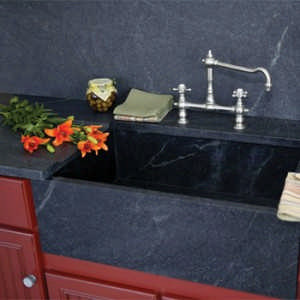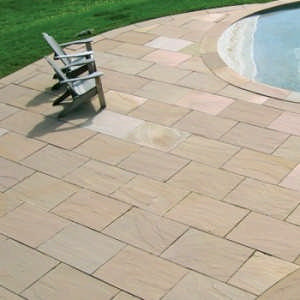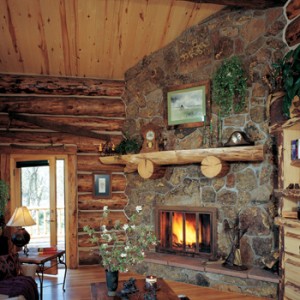
Stone is an integral part of nearly every modern house, but it's an especially natural fit in a timber home. Textures ranging from smooth-as-glass granite to rough-and-tumble travertine are common finishing materials used everywhere from the foyer to the kitchen to the bath. But why limit your options to the ordinary? Here we explore some unexpected options you can incorporate into your timber home. 
Soapstone
Where does it come from?
Soapstone has been excavated all over the world for centuries, but in the U.S, it's quarried largely in New England, particularly in Vermont.
What makes it special?
Since this dense stone contains talc, it has a powdery, silky feel to the touch that's unique to soapstone. It's heat resistant and isn't affected by acids like marble or granite, and because it's nonporous, any surface marks can be sanded or buffed out easily. Soapstone comes in only one color family — gray — but it does range from a soft, smoky blue to a deep charcoal, so color options are plentiful. Plus, it takes on a beautiful patina over time.
How is it used?
Because of its ability to absorb and distribute heat evenly and for long periods of time, soapstone has been a popular medium for masonry heaters for years. Recently, the rock has gained momentum as a counter-top and sink material, thanks in large part to its beautiful blue-gray shade and low-maintenance properties. Some more unusual applications include balusters, stair treads and windowsills. 
Sandstone
Where does it come from?
Sandstone is formed in every corner of the world from Arizona to India, with each region giving the rock its own unique characteristics. Comprised of tiny grains of quartz and trace amounts of other minerals bound together with silica and clay, it's usually formed near river deltas, but beds can be found in deserts and along beaches as well.
What makes it special?
Its diversity both in appearance and adaptability makes sandstone highly desirable. Its course, grainy texture ranges in color from white to brown to blue, but the most common shade is a rosy tan. Certain colors have been strongly identified with the region from which it comes, such as the rusty-red tones from the deserts of the western United States.
How is it used?
Sandstone is very versatile, finding a place in timber home construction in every capacity including tile backsplashes, foyer flooring, swimming pool surrounds and patios, retaining walls — even entire building facades. 
Moss Rock
Where does it come from?
Geographically, moss rock can be found almost anywhere. It's typically fieldstone found in semi-arid, partially shady regions.
What makes it special?
Sometimes referred to as "living rock," moss rock is covered in live organisms called lichen, which is sort of a cross between algae and fungi. The lichen is usually golden-green in color, which gives its host a mottled, almost camouflage-patterned appearance.
How is it used?
The fireplace is the most common application for moss rock, but it also can be used for interior accent walls, retaining walls, pathways or anywhere your home and landscape calls for a distinctive touch.





